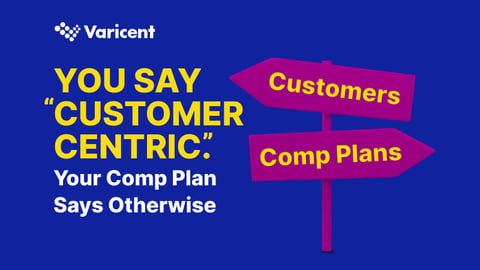Why Workplace Diversity Should Matter
Before we dig into what that means and the wider advantages of workplace diversity and why it’s so important to every business, let’s get things started with some relevant statistics and findings.
- Deloitte recently reported that companies actively following a diversity policy were reaping profits of 2.3 times higher cash flow per employee.
- Gartner’s study revealed that team performance was likely to be up 30 percent where there was a more diverse workplace.
- BCG’s study captured a 19 percent increase in revenue when compared to businesses where diversity is less established.
These highly-regarded studies and stats alone should provide a solid enough business case for getting on board with a workplace diversity policy, but this blog detail the main benefits are for your company and team. And it’s much more far-reaching than financial reward.
What is Workplace Diversity?
“Companies that embrace diversity and inclusion in all aspects of their business statistically outperform their peers” – Josh Bersin, Industry Analyst and Thought Leader
Often used alongside “Inclusion”, “Diversity” is a term that refers to respecting and regarding the differences in gender, race, culture, sexual orientation, class, and religion. A further umbrella term commonly used around the topic of workplace diversity is Diversity, Equity, and Inclusion (DEI). When applied specifically to the workplace, DEI the process of ensuring every hire is recruited using the same non-bias process. Furthermore, those within a team or organization are seen and heard as individuals, whose opinions, talents, and backgrounds bring both value and perspective to any conversation or decision without prejudice.
What are the Benefits?
When opening up the conversation around workplace diversity, it’s important not just to list the benefits, but to really understand each:
1. Wider talent pool: By making it clear that your business doesn’t just accept diversity, but embraces it, you’re open and responsive to a bigger selection of candidates. You’re on the hunt for the most qualified and suitable person, and they’re attracted to a modern, progressive company that is more likely to give them a place to develop and contribute fully. Take this one step further and by being a business that is not just welcoming to all-comers, but is proactively reaching out to more diverse candidates, you’ll soon have a company that’s reflective of this welcoming attitude.
2. Greater innovation: If you have one group of product designers in a room together brainstorming ideas for a new product who are all white, male graduates between 23-35 years old, the chances are is that they’ll often think alike as they’ve had similar life and work experiences. The opportunity for original thinking is far less than if that brainstorming session included not just women, but a more evenly distributed selection of ages and those that come from different backgrounds. From an efficiency angle alone, this is worth considering. Imagine if by bringing in a diverse mix of people you were able to creatively problem-solve in an hour, rather than getting glued to tired thought patterns (and homogeneous people) over a matter of days.
3. New perspectives and ideas: Carrying on from greater innovation, workplace diversity really starts to show its value when we consider new perspectives and ideas. That’s more than inventiveness – it’s taking on a new point of view when shaping team dynamics, customer relations, or marketing strategies. For example, if you’re trying to come up with an advertising campaign for a product that is of use to women in a certain age group or marketing a medicine that will really help those with a particular health issue, the results will be far more far-reaching if those working on the project can relate to it. With research showing that diverse teams can expect 60% improvement in decision-making abilities, it’s worth getting behind the idea of “new”, be it employees or ideas.
4. Increased profits and productivity: There were some strong opening numbers in the intro to this blog, but we can’t just leave it at that. The more workplace diversity you can cite, the more you can expect an upturn in profit and productivity. Harvard Business Review reported that diverse businesses measured against six categories of diversity (migration, industry, career path, gender, education, and age) had a 19 percent higher revenue. And it’s hard to put up a counterargument to these figures! These indicators of profit and revenue are proof of what inclusivity can bring.
5. Better employee performance and more immersive workplace culture: Imagine an orchestra where there were only violins, maybe the odd viola; a circumstance where the cello player had disappeared without a trace? How would they be able to perform beautiful music without woodwind or percussion? The answer is, of course, they wouldn’t. The rhythm would be off and the cooperation between the few players would be sparse. A team is only as good as the sum of its many and varied parts.
Challenges and the Future
It’s worth bearing in mind that all these considerations are as critical to the prospective employee as they are to the employer. A Glassdoor survey revealed that 72 percent of women, 89 percent of black participants, 80 percent of Asians, 70 percent of Latinos agreed that diversity was an important factor when considering a workplace. Many respondents who consider themselves to be white also think it’s important.
There are challenges along the path to greater workplace diversity. It’s not always easy to be heard over the traditionalists rallying cry of ‘If it isn’t broken, don’t fix it.’ Women and ethnic minorities or anyone that has felt marginalized because of their diversity can struggle to gain the confidence to speak up and contribute. Therefore, it’s the responsibility of HR and leadership to get coaching in place alongside policies so that workplace diversity and inclusion become the everyday norm, and not the anomaly.
Understanding Workplace Diversity in Your Business
To get the measure of how diverse (or not) your business currently is, we recommend you access Varicent’s free Symon AI diversity app. The filters give you access and insight into the make-up of your company and can be a great resource to help implement or improve upon your existing diversity policy. You can also take advantage of our free Symon AI Gender Pay app and establish if there’s gender disparity around pay for equal roles.




